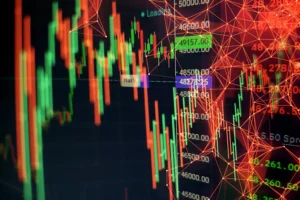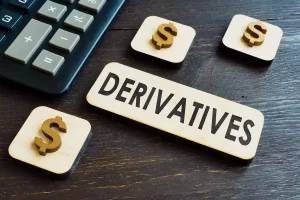Forex is a big market that allows millions of people every day to become more and more successful. Forex signals are a common phenomenon that is part of the platform. Based on market analysis, trading signals are recommendations to buy and sell financial assets. They help identify trading opportunities that are free or paid. If you are new to trading, you might have thought about using trading signals to help you speculate in the stock market. In fact, following someone else’s Forex signals can save you a lot of time and energy, but it can likewise teach you brand-new trading methods and strategies.
What are Trading Signals & How Do They Work?
A signal in Forex or other markets, such as a stock, recommends when to open/close a trade depending on the asset, its price, and the set time. These signals perform as a warning to traders on when to enter or exit a trade. They are provided by experienced traders or specialized companies free of charge or for a fee. These signals are not designed on any fundamental or news information. Instead, they are based on charts and technical tools that analyze data such as past trends, moving averages, and support and resistance levels.
Typically, a signal is a concise message that contains only the principal elements. Stock market signals help novice traders get accurate information on trades recommended by Forex signal providers in real-time. Nevertheless, it is vital to be careful. These signals are not infallible.
There are numerous signal providers on the market. Consequently, it isn’t easy to understand which of them is reliable and gives beneficial Forex signals. They should answer the following questions:
- What asset makes sense to open a deal at the moment?
- Which direction will the price go? Should I go short or long?
- What is the target profit level? At what level to insure a deal and why?
- How long will it take for the price to reach the target level?
- What is the probability of a positive result?
The trader determines the volume of the transaction himself.
Forex signal provider is the one who generates signals and delivers them to the trader in any way convenient. Providers can be private, professional traders or signal services that combine the work of a team of analysts. Every day, Forex professionals analyze fundamental factors using technical analysis, based on which they make a forecast regarding the future price movement, profit targets, and risk level.


Turnkey Brokerage Solution For Your Business
Get the most profitable fully licensed fx/crypto brokerage software or ready-to-operate business in 48 hours. Best-in-class web & mobile trading platforms, sales-driven CRM, full integration with MT4/5, and 150+ payment providers.
Types of Forex Signals
Forex trading signals are classified into two types. First type is the style of trading strategy for which they are used. The second one is how the provider generates trading signals.
Scalping, swing trading, trend following
Scalping sends signals that seek to capture small, quick profits from short-term price movements. There are multiple trading signals per day to a single traded asset, and the calls must be executed immediately to avoid slippage (deviation from the price of the movement).
Swing trading (swing trading) seeks to capture profits from large price movements. There are fewer signals here, and trades stay open up to 1-2 days. Swap broker rates become an essential factor, and drawdowns may require more capital.
Trading signals of trend following strategies are based on capturing and exploiting large market movements and are long-term. Bidding lasts several weeks or months. Typically, signals are added to increase open positions and scale winning trades.
Types of analysis for signals generation
Signal providers use sophisticated automated algorithms developed and maintained by quantitative traders. Technical analysis is effective for short-term scalping and swing trading. Fundamental analysis is better suited for long-term macro analysis and predicting market trends.
Another method used by trading signal providers is to copy discretionary traders who analyze the market and make trading decisions on the fly based on their experience. As long as traders are profitable, their signals will satisfy the provider’s clients.
How Can You Get Trading Signal
Forex signals are received from various entities that offer this type of service, including also:
- Providing accurate entry, exit, and stop-loss levels;
- Analysis of comments explaining Forex trading signals;
- Transaction history reflecting profit and loss, as well as statistics on previous results;
- Data with trading results;
- Emails;
- SMS Alerts;
- Customer service by mail or phone.
Providers’ reliability varies, as is the case with any other profit-making service in the market. Think twice if you find a signal provider with an 80-90% success rate. There are companies with reasonable success rates, but to be recognized as the best Forex signal provider, they must be able to stand up and prove their results.

Types of Signals in Trading
By level of automation, we differentiate these types of signals:
- Manual. The trader receives information about the signal and decides to open deal options: SMS, email, Forex signals in the trading forum, alerts.
- Automatic. The signal from the supplier is copied automatically. If a trader opens a trade, the same trade is automatically opened on the investor’s account. The investor can set copy parameters: percentage, amount, ratio, etc.
By type of payment, we differentiate:
- Free. Maybe part of a marketing campaign or loyalty program. A broker supplies free signals to add to a specific type of account.
- Paid. The fee can be fixed or as a percentage of profit. The first option means a fixed price for a week, or a month, regardless of the number of signals and their effectiveness.
The second option is social trading, where the trader is interested in profitable signals. The investor copies the trader’s movements, and the trader receives a commission from the profit. The investor does not pay any commission on losing trades.
By duration:
- Short term. For example, on time frames M5-M15;
- Medium-term. For instance, on daily intervals;
- Long-term. For example, at weekly intervals.
Each trader can choose a convenient type of signal that will meet his requirements — the main thing is to find the right one.
What to Look for When Choosing a Forex Signal Provider
The effectiveness of signals is the main criterion for choosing a signal provider for Forex. Many providers have a free trial period; all brokers have a demo account. Consequently, selecting a provider is not difficult.
Criteria for evaluating a signal provider in social trading:
- The lifetime of the account. The account should exist for at least a year. During this time, the accumulated statistics on the performance will be objective, as it will take into account seasonality. Be sure to look at the archive of the trader’s accounts and analyze the closure reasons.
- Trade statistics. The smoothness of the upward movement of equity, the maximum drawdown, the number of losing and profitable trades in a series, and the ratio of beneficial and losing trades.
- Yield. High returns indicate that the trader is using high-risk strategies or high-risk assets, e.g. Martingale, pyramiding, or cryptocurrencies.
- The number of subscribers. The bigger, the better.
You can connect an account with multiple traders. Or open several charges related to strategies with different levels of risk.
Advantages and Disadvantages of Using Signals in Trading
All trading involves risk, but the use of signals can significantly reduce losses for novice investors and allow you to get some advice from experienced professionals. Forex signals are not only «training» for actual trading; they are also widely used by experienced traders. Signals help shorten the learning curve for trading: the logic behind any trade offer gives you a complete picture of what trading options the signal is based on.
Benefits of using signals in trading:
- Saving time. It is not always possible to keep track of all charts simultaneously. There is not always enough knowledge to make the right decision. There is not always time to analyze dozens of sources of information to seek a signal.
- Education. Using the provider’s signals, the trader can analyze them. Why did the provider choose this particular signal and not this one? What would I do in his place? Signals are an opportunity to learn from someone else’s experience.
- Psychological effect. Relying on the supplier’s signals, the trader, to some extent, relieves himself of responsibility. From a psychological point of view, it is always easier to blame someone else instead of yourself in case of failure.
A trader can always become a signal provider himself, receiving additional income. Some brokers have multi-level social trading. A trader copies transactions of one or several traders to his account. And presents his account for copying to other traders.
Disadvantages of using signals in trading:
- The risk of bad faith of the signal provider. A signal provider is 100% interested in the effectiveness of his signals only in one case — if he also opens deals on them. Most independent provider platforms do not trade themselves or cannot provide proof of actual open trades. The situation is similar to social trading — the provider’s account may be a fake created by the broker.
- No guarantees. No one can guarantee 100% signal efficiency. And if the trader followed the recommendations, then the responsibility lies with him as well.
- Additional expenses. Commission to the signal provider, the fee to the service for access to the channel with signals, and fixed price to the trader.
- The effectiveness of free signals is easy to check on a demo account. If the signs are paid, it makes sense to think about what is more profitable: get a budget subscription for several days and test the signals on a demo account.
With social trading, it is more complex — the ability to connect to a demo account signal provider is rarely provided. Consequently, a cent account can be an alternative to minimizing risks: by clicking it to a provider, you can evaluate the effectiveness of the actual trading strategy with minimal losses.
Best Forex Signal Sources
There are numerous different signal sources. However, the practice and experience of millions of professional traders allow us to identify several of the most successful sources types:
- Moving average. This signal shows the average value of an asset over a given period (it can be either minutes or months), allowing you to smooth out the noise formed due to random price changes. A simple moving average (SMA) is calculated as an arithmetic average. The closing prices of an asset in given periods are summed up and then divided by the number of periods. You can evaluate the overall picture and decide to buy or sell an asset.
- Exponential moving average — EMA. It differs from the simple moving average discussed above in that all closing prices of a currency have different weights. The latest data has more weight, and the initial data has less weight. Consequently, with the help of EMA, it is more accessible to react to recent price changes.
- Moving Average Convergence and Divergence Oscillator – MACD. Oscillators include signals that change between two extremes, that is, in those places on the chart where the price of an asset reaches the limit values in a given period. The oscillator fluctuates in the specified interval. Its position shows whether the currency is overvalued or undervalued, depending on whether the oscillator is closer to the upper or lower limit. The long-term EMA is subtracted from the short-term one to calculate the moving average convergence and divergence oscillator.
- Relative Strength Index — RSI. This signal is also an oscillator. The Relative Strength Index measures the speed of price movement. The RSI ranges from 1 to 100. A currency is considered overbought if the relative strength index is above 70 and oversold if the RSI is below 30.
- Fibonacci levels. The Fibonacci sequence (0, 1, 1, 2, 3, and beyond, where each following number is equal to the sum of the previous two) was formed in the 13th century. It was only applied to finance in the 19th century when Charles Dow noticed that the fundamental Fibonacci ratio between neighboring numbers, more commonly called the golden ratio, is observed when adjusting the value of assets. This signal makes it possible to predict the trend reversal and the degree of correction.
These signal sources are a classic and have been tested by the experience of professionals. It is the foundation of Forex trading, so if you do not like to take risks, it is better to resort to these sources.
Summing Up
Forex signals can certainly work, but it takes a human mind to analyze them correctly. There are many tools that allow you to scan the foreign exchange market and display its fluctuations over time.
Forex signals are technical analysis tools. They are calculated according to predetermined formulas and help traders make the right decisions about buying or selling assets on the international currency market. The use of Forex indicators greatly simplifies trading and minimizes human error.
However, it is worth using only those Forex signals correctly calculated and received from trustworthy sources. At the same time, it is still advisable to first check the indicators’ operation on a demo account.






